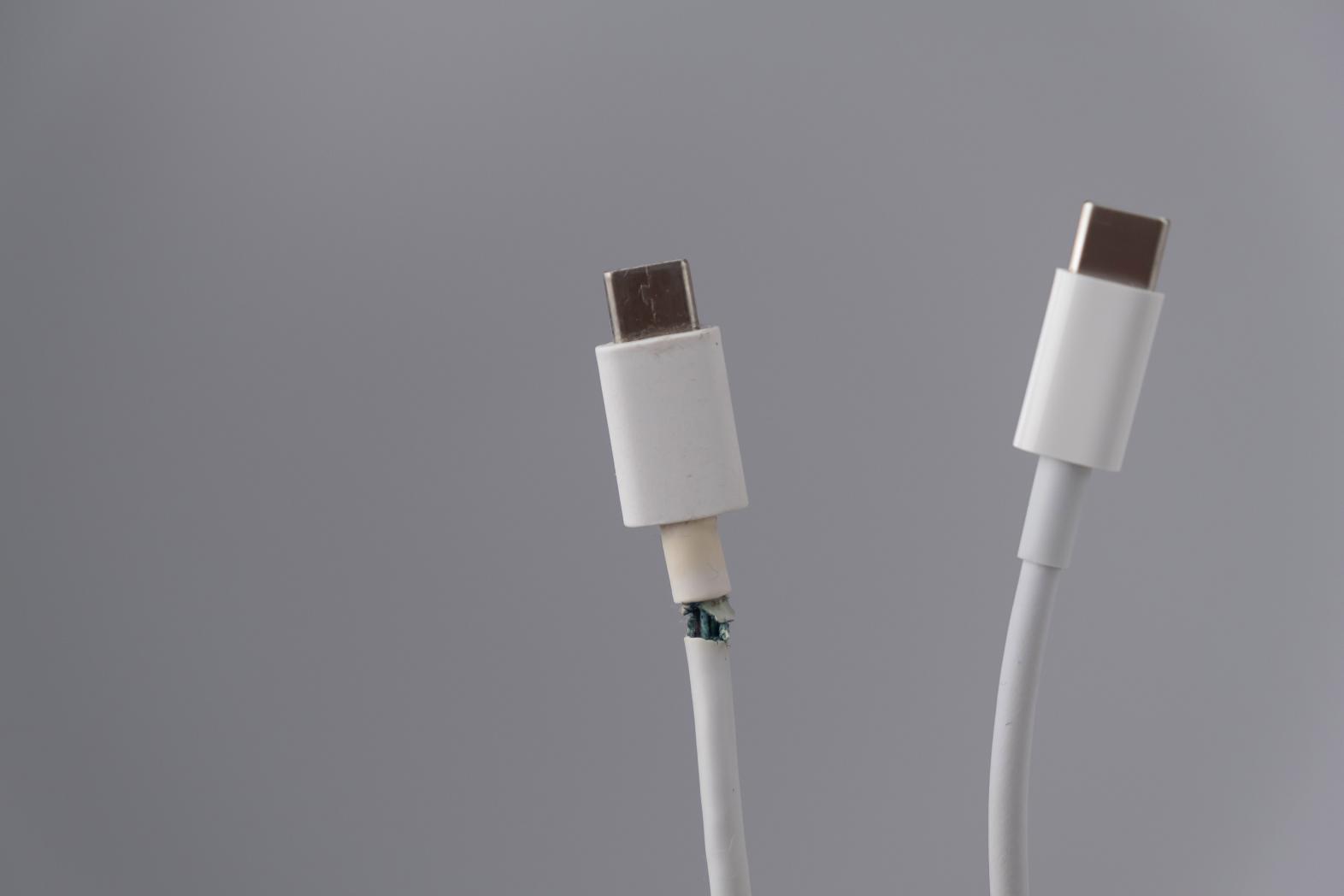Helping Devices Charge Safely with Standards for ICT Power Cables

Are Broken Charger Cables Dangerous?
Poorly constructed electric cables are not only annoying – they’re also dangerous. If a cable is constructed with substandard materials, it can expose users to dangers such as overheating and fire.
The risk is made even greater due to the mounting dangers of lithium-ion batteries in rechargeable devices such as cell phones, tablets, and laptop computers. These batteries are capable of storing large amounts of energy, but if they are damaged due to conditions such as overcharging, impact, or an external short circuit, they can enter an uncontrollable, self-heating state known as thermal runaway, which can result in extremely high temperatures, violent cell venting, smoke, and fire.
How Do UL Standards Make Charger Cables Safer?
Our standard, UL 9990, Information and Communication Technology (ICT) Power Cables, features construction, performance, and testing requirements to help prevent overheating, damage to devices, and the risk of fire spread from information and communication technology cable assemblies under normal operating conditions, to help ensure they can withstand the demands of normal use.
UL 9990 features two strain-relief tests that can be performed to evaluate the cable’s ability to withstand regular connection and disconnection from its corresponding device, without transmitting tension from the cord to terminals, splices, or wiring within the connectors. During the first test, the “Cable Pull-Out Test,” the cable is clamped at one end and subjected to a 40 N (9 lbf) axial load for a minimum of one minute. During the second test, the plug, connector, or jack is mounted with the cord hanging in a vertical position, and a force of 40 N (9 lbf) is gradually applied to the cord for one minute. The direction of application of the force is to be varied from directly downward to an angle of 45° from the vertical in all directions.
UL 9990 also features requirements for flexing tests, during which, the cable is subjected to a minimum of 200 cycles of flexing. During one of these tests, the cable hangs vertically while supporting a test weight of 113 g (4 oz). The cable is then secured to rotating jaws in a flexing apparatus, which rotate to an angle of 90 degrees to each side of the centered position. Each cable assembly is to be subjected to 100 complete flexing cycles in each plane. A flexing cycle consists of rotation of the jaws from the vertical (centered) position until 90° to one side, back past the vertical position until 90° to the other side, and back to the vertical position. The rate of testing is to be 10 cycles per minute.
In order to pass these tests, the cable assembly must not exhibit any evidence of stress or damage on the internal connections. Stress or damage can be determined through visual examination, dielectric voltage withstand test, electrical continuity, or other similar means.
How Can I Get Involved in Standards Development?
Our standards are developed through a consensus-based process, which integrates scientific and testing expertise with input from our technical committee members and stakeholders. TC members represent a variety of interests, including industry, academia, government, retail, and manufacturing. If you are involved in the design, construction, sale, or operation of information and communication technology (ICT) power cables, and you would like to help improve safety in your industry, please take a moment to learn how you can get involved.